Planning is essential for the success of most businesses and organizations. Therefore, structured website planning will give a clear direction for your operation, ensure the new website delivers effectively for the business, and delights users. Whether you are a web designer working with clients or a business owner, this ultimate guide will help you plan properly and lay the groundwork for the coming ones.
Table of Contents
What Is Website Planning?
Website planning is an essential initial step in the website development process. It involves strategic thinking and documentation to determine the type and specifics of the website that a business intends to build. This includes defining the goals of the website, and the reasons why it is being developed.
By planning out these important details, a business can ensure that its website meets its specific needs and is optimized for success.
The Importance of Website Planning
Now that you’ve got the basic definition of website planning and the two most common types of website planning, you might wonder why the website planning process always comes first. Reasons for this practice lie in the benefits of planning before jumping into the building steps.
Save Time and Money
Detailed website planning can save money and time when hiring third-party website development teams. A well-planned website structure minimizes the chance of additional fees, allowing the team to work smoothly without constant consultation. However, a loose guide can lead to expensive additions and a messy, prolonged website development process.
If you are using an in-house team to build a website without planning, you might lose opportunities and resources every extra day the project runs over if problems arise.
Alleviate Many Design Issues
Design is crucial in web projects and should be executed with knowledge of the end product, including content, goals, and functions. Without prior website planning, the design team may be confused about the overall purpose, roles assigned to each page, and objects within them. Lack of guidance and clear planning can lead to design problems and cause stress for those in charge.
Provide Better Results
Just like a business plan, a clear roadmap is necessary to reach your goals during website development. Without it, clients may express disappointment, stating that the website doesn’t meet their expectations or doesn’t function as they want it to. This lack of clear expectations can lead to project failure or falling behind competitors.
However, with detailed website planning, you can achieve your business goals with better results. For instance, if you need quality leads, a comprehensive website planning and design guide can help create a website that appeals to customers, increases time-on-site, and boosts conversion rates.
How to Create a Website Plan?
Business Purpose of Creating A Website
Creating a website plan is a crucial step in the process of building a website. The first step is to clearly define the business purpose of creating the website. Is it for eCommerce, branding, providing information, or something else? According to our observation, there are two most common purposes of website development: eCommerce and Content. Businesses want to build a website for content purposes such as providing news, blogging, or branding, we can categorize them into two smaller categories based on the purposes of businesses: branding and providing information.
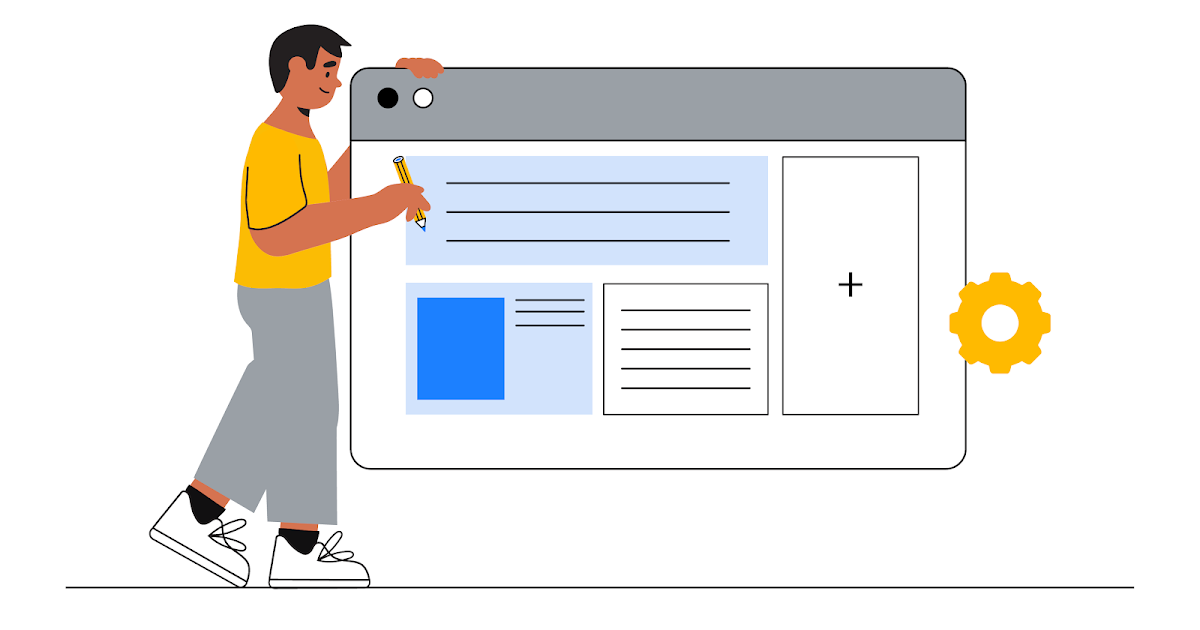
For eCommerce purposes, some businesses may require a website to sell products online, manage their inventory, or showcase their services to their target audiences. This is pretty clear to people who are living in a digital era and so familiar with online shopping or using online services and digital products. With this type of purpose, business owners should consider some important specific factors such as:
- The types of products or services being offered.
- The target audience and their shopping habits.
- The platform and technology needed to support the website.
- Shipping and payment options.
- Policy problems.
In contrast, others may wish to create a website focused on creating and developing content that promotes their brand or just purely for blogging and providing news and information to the public.
With the aim to merely provide news and information (such as the official communication organization), this can be a challenging market for new merchants or newbies. Building trust with audiences is crucial in these situations, and this only can be achieved through effective branding, marketing efforts, long-time planning, or being supported by big, reputable organizations. When customers trust a brand, they are more likely to believe the news and information provided.
Therefore, if businesses don’t utilize websites for eCommerce purposes, most of them will fall into using them for branding and marketing purposes through their quality content generated. With this type of purpose, business owners should consider some important specific factors such as:
- The design elements such as color scheme, typography, and imagery reflect the brand’s personality.
- An effective content strategy that aligns with brand messaging and resonates with the target audience.
- The user experience on the website.
Budget
Setting a realistic budget is an important part of website planning. When preparing your budget, you should consider not only the costs associated with the process of website creation and launching but also the ongoing costs for the first couple of years running the website.
For an eCommerce website, the cost of development may vary depending on various factors such as the complexity of the site, the features and functionalities required, and the level of customization. Generally, it is recommended to allocate a budget of at least a few thousand dollars for a basic eCommerce website plan. However, more complex and customized eCommerce websites can require a budget of tens of thousands of dollars or more.

A common solution for eCommerce companies nowadays to develop their own website is through the empowerment of open-source platforms such as Shopify, Magento, WooCommerce, SquareSpace… Each platform has its own strengths and weaknesses, so it’s important to choose the one that best suits your business needs and budget:
- If you have a limited budget, you can choose from free or low-cost options such as Shopify, WooCommerce, or Wix. These platforms offer a range of features to get your eCommerce business up and running without breaking the bank.
- However, if you have a larger budget, you can consider investing in more expensive options like Magento or Shopify Plus, which offer more advanced features and scalability.
Ultimately, it’s important to choose an eCommerce platform that fits within your budget while still providing the necessary features and functionality to help your business grow.
For branding websites, similar to eCommerce websites, there are also some crucial factors that you need to consider when planning your budget. It can be influenced by elements such as the complexity of the design, the number of pages required, and the amount of custom functionality required. However, generally, a branding website can be created with a lower budget than an eCommerce website since it doesn’t require complex functionality such as payment gateways and inventory management systems.
A small to medium-sized business can expect to spend anywhere from a few thousand dollars to tens of thousands of dollars on a branding website. You can leverage the power of the available platforms for content instead of coding and developing from the ground. There are several platforms available to use but the most common options are WordPress, Wix, and Squarespace no matter how big your budget is.
- WordPress: WordPress is a popular and versatile platform that can be used for both eCommerce and branding websites. It offers a wide range of templates and plugins, making it easy to customize your site to your liking.
- Squarespace: Squarespace is a website builder that offers a variety of visually stunning templates and an intuitive drag-and-drop interface. It’s a great option for small businesses or individuals who want a professional-looking website without needing to know how to code.
- Wix: Wix is another popular website builder that offers a wide range of templates and a drag-and-drop interface. It’s also budget-friendly and has eCommerce capabilities if needed.
B2B Possibilities
B2B possibilities refer to the potential opportunities and advantages that arise when businesses sell products or services to other businesses rather than directly to consumers. This affects the process of website planning a lot.
For an eCommerce B2B website, it is important to consider the specific needs and expectations of businesses as opposed to individual consumers. They often require more complex features and functionalities, such as custom pricing, bulk ordering, and integration with third-party software.
To ensure a successful eCommerce B2B website, it is crucial to have a clear understanding of the target audience and their pain points. The website should be designed to provide solutions to those pain points and make the buying process as easy and efficient as possible.
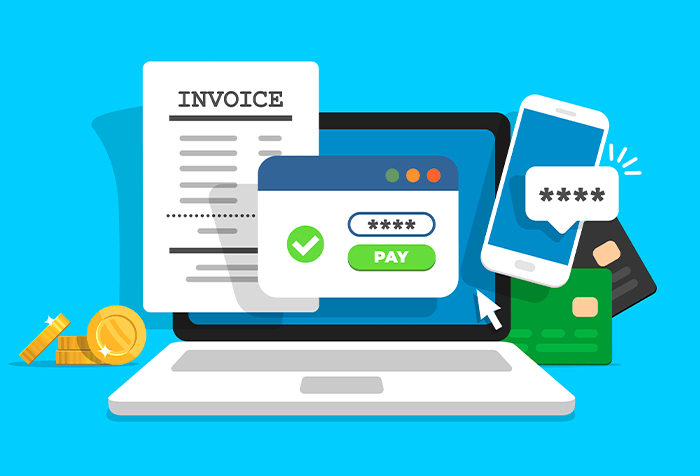
Additionally, B2B websites often require a strong focus on content marketing, with resources such as whitepapers, case studies, and blog articles that address industry-specific topics and provide valuable insights to potential customers.
In terms of platform, B2B websites may require more advanced features that are typically found in enterprise-level eCommerce platforms. These platforms often offer customization options and integrations with other enterprise software, making them ideal for B2B businesses with more complex needs.
When it comes to branding purposes, a website plan should be designed to create a professional image and a distinct online presence for the company. The website should reflect the company’s identity, values, and vision. The plan should include a detailed analysis of the target audience, competitors, and the company’s unique selling points.
The branding website plan should outline the key messages that the company wants to convey to its audience. It should also include the design elements such as colors, typography, and imagery that will be used to create a consistent visual identity across all digital platforms. Additionally, the plan should consider the user experience, ensuring that the website is easy to navigate and that the content is engaging and informative.
When planning a branding website for B2B purposes, it is important to consider the company’s products and services, as well as its target audience. The website should be designed to appeal to potential clients and showcase the company’s strengths and capabilities. A well-executed branding website plan can help build brand awareness, generate leads, and ultimately drive sales.
International Scalabilities
With the expansivity of the business market to the international environment, it’s unquestionable to consider the ability to scale up your business to the global level. Thus, expanding your business to the international market requires a different approach to website planning.
One key consideration is language. A website designed for a specific country or region should be able to easily accommodate translations or alternate language versions. This can involve the use of language switchers or menu options and may require careful attention to design elements such as text length and layout.

Cultural considerations are also important. A website may need to be adapted to local customs, expectations, and preferences. This can involve adjustments to content, imagery, color schemes, and more. For example, a website for a business in a conservative culture may need to be more reserved in its design and content.
Technical considerations are also important for international scalability. Websites may need to be optimized for different devices, internet speeds, and browser types in different regions. Security and privacy laws may vary from country to country, requiring different approaches to data handling and user consent.
Especially for eCommerce websites, payment processing is also a critical component of international websites. You’ll need to select payment gateways that are widely accepted in the countries you’re targeting and ensure that they support multiple currencies and languages.
Types of Goods/Services
When it comes to website planning, it’s important to consider the types of goods or services that will be offered on the website. This can affect many aspects of the website, such as the design, functionality, and user experience.
When it comes to website planning, it’s important to consider the types of goods or services that will be offered on the website. This can affect many aspects of the website, such as the design, functionality, and user experience.
For example, if the business offers luxury goods or services, the branding website should convey a sense of exclusivity and sophistication. On the other hand, if the business offers budget-friendly goods or services, the branding website should emphasize affordability and value.

Additionally, the type of goods or services can also affect the design and layout of the website. For example, if the website is offering physical products, the design should focus on showcasing the products in an attractive way, with high-quality images and detailed descriptions. On the other hand, if the website is offering digital services, the design should focus on presenting the services in a clear and concise manner, with easy navigation to purchase or sign up.
Furthermore, the type of goods or services can also impact the target audience and the marketing strategies used to reach them. For instance, if the business offers products for a specific niche, such as eco-friendly or vegan products, the branding website should appeal to that target audience and use targeted marketing strategies to reach them.
With eCommerce websites, you need to pay a small notice that if the business offers physical goods, it will need to consider factors such as inventory management, shipping logistics, and payment processing. On the other hand, if the business offers digital products or services, the website planning process will need to focus on the delivery and security of those products.
Integration Abilities
In website planning, it is important to consider the integration abilities of the chosen platform or CMS (Content Management System) to ensure the website can connect and work with other tools or services needed for the business.
A company may want to integrate its website with customer relationship management (CRM) software to manage customer interactions and data. They may also want to integrate their website with a marketing automation tool to automate their marketing efforts. In addition, they may want to integrate their website with social media platforms to expand their reach and improve engagement.
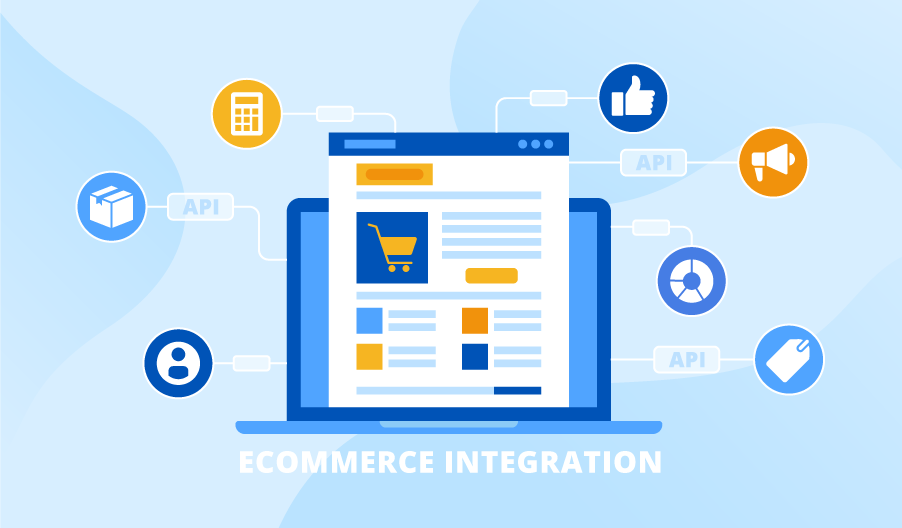
With eCommerce websites, the integration tasks are more complicated than branding or content websites. You may need to integrate with a payment gateway, a shipping service, or an inventory management system. Other possible integrations could include marketing automation tools, customer relationship management systems, and accounting software to manage finances. Ensuring seamless integration with these systems can help streamline business operations and improve the overall customer experience on the website.
You also need to evaluate the compatibility of third-party integration with the platform used to build your website. Ensuring seamless integration with these systems can help streamline business operations and improve the overall customer experience on the website.
User Experience and Website Structure
User experience and website structure are critical components of website planning. The website structure must be designed to provide easy navigation and access to information. This can be achieved by organizing the content in a logical and intuitive manner. The user experience should be optimized to ensure that visitors can quickly and easily find the information they need.
The website structure should also be designed to accommodate future growth and changes in the business. It should be scalable and flexible to allow for the addition of new pages, features, and functionality as needed. This can be achieved by selecting a platform that allows for easy customization and integration of new components.
Additionally, the user experience must be optimized for different devices, such as desktops, tablets, and smartphones. The website must be responsive, which means that it can adjust to different screen sizes and resolutions. This ensures that users have a consistent experience regardless of the device they are using to access the website.

Above are the must-have criteria for both types of websites. Each website type will have its own way to optimize the user experience and website structure. For eCommerce websites, a well-structured layout and navigation system can help visitors easily find the products they are looking for, and a smooth checkout process can increase conversion rates. It is important to optimize the loading speed and mobile responsiveness of the website to ensure a seamless shopping experience for users.
For branding websites, a clear and easy-to-navigate structure can help visitors find the information they need and engage with the brand. The design and visual elements of the website should align with the brand’s identity and message. A good user experience can help build trust and credibility with the audience, leading to increased engagement and conversions.
Another big difference between these two website types is the blog section. While eCommerce websites focus on showcasing products, and optimizing the product’s content, branding/content websites often prioritize providing added valuable information and building a community through a blog.
Website Design
Website design is a crucial aspect of website planning as it can greatly impact the overall user experience and success of the website. The design should be visually appealing, user-friendly, and aligned with the brand image and message. It’s essential to consider the target audience and their preferences while creating the design.
Usually, there are two approaches to designing your website, which is:
- Using a website builder app/platform: suitable for projects with a limited budget or people with little coding knowledge.
- Hiring a professional web designer (team): best suited when planning a more complicated website.
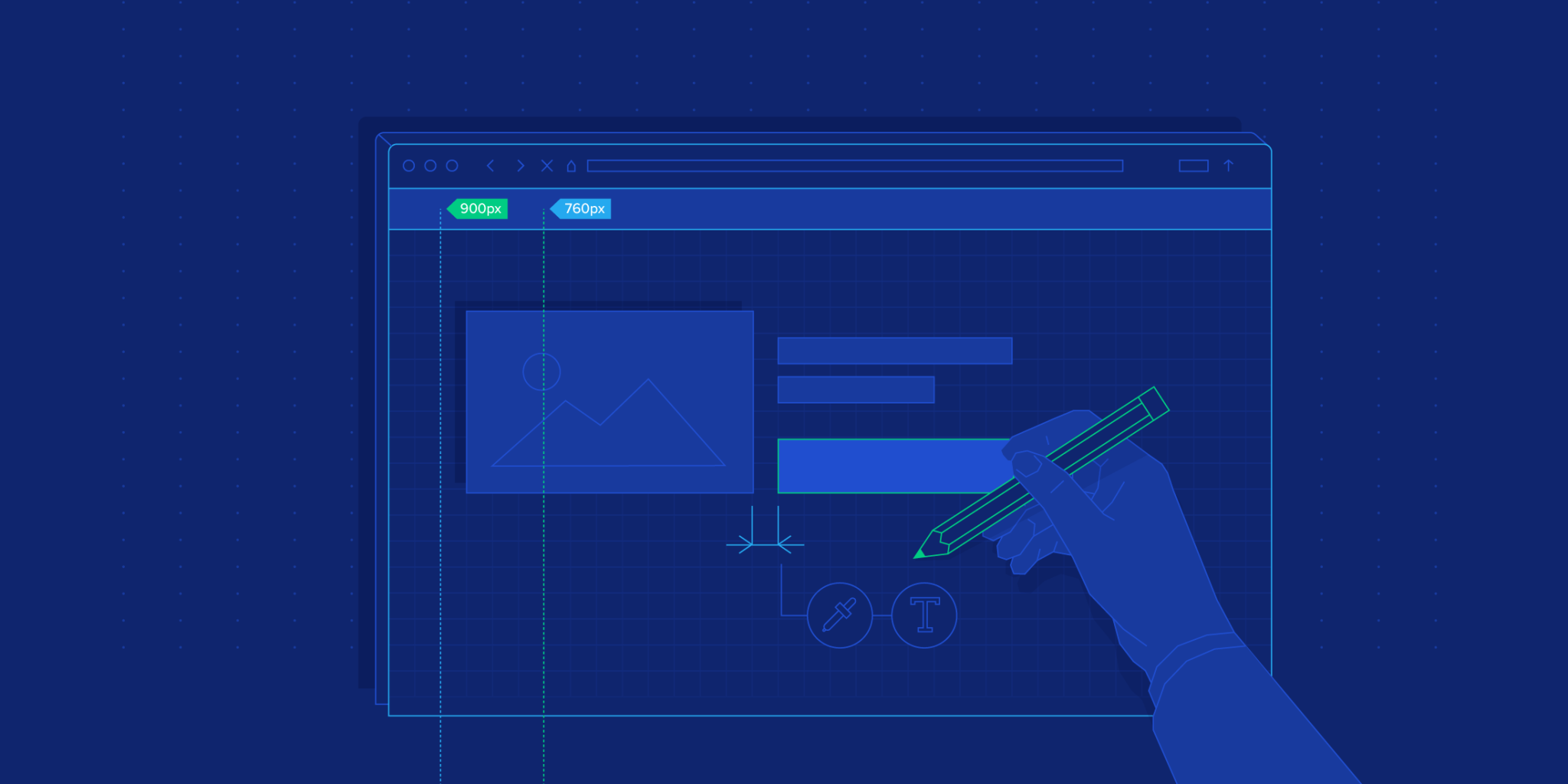
The importance of good web design can not be underestimated. An ill-designed website will drive away visitors, thus dumping all your marketing efforts. To avoid such a situation, you’d better keep in mind some basic rules as follows:
- Create user-friendly navigation. Research shows that vertical and centered navigation at the top of the page is the optimal choice to engage users.
- Make sure the website fits the screen. You can use responsive design to fit your website to all screen sizes.
- Keep your website light by compressing images for a quick loading process.
- The business logo and tagline should be prominent on the page.
- Keep the text in an easy-to-read font. Styles and colors should also be consistent across the website.
- Ensure clear and concise copy, and put important information and features above the fold.
- Make notes about any changes to be done to the style or features.
Content Marketing Planning
Content is king. Every website needs content to show to visitors. Content is not just about blog posts, but anything that contains information, such as videos, images, documents, guides, how-to’s, sales copy, infographics, podcasts, slideshows, etc.
Since content is a vital aspect of a website, you should either stay consistent with a wireframe for your self-created content or hire experienced writers. Last but not least, it is a good idea to incorporate some professional-looking pictures if your budget allows it.
Another important aspect of content marketing planning is developing a content calendar, which outlines the topics and types of content to be produced and when they will be published. This helps ensure a consistent flow of content and can be useful for coordinating efforts among a team of writers or content creators.

You also need to choose a content management system to help you create, manage, and update the content without having to write code. Among conventional options such as WordPress, Wix, Joomla,… Magento with the latest update Magento 2 stands out as the optimal tool for modern businesses. Compared to other CMS, this platform provides valuable information to customers and increases search engine visibility with intuitive features, including:
- Compatible with more popular platform
- Improve the customization process
- Supporting testing-friendly platform
- Improvements in performance and scalability
- Easier front-end development
- Reduce upgrade costs and efforts
After publishing, you have to measure the success of your content marketing efforts through analytics and adjust your strategy as needed to optimize performance. This may involve experimenting with different types of content, adjusting your publishing frequency, or targeting different audiences.
Search Engine Optimization Planning
An effective marketing strategy is essential for driving traffic to your website. Without one, it’s likely that only a few people will ever visit. This is where Search Engine Optimization (SEO) comes in. By organizing your website’s content by topic, you can help search engines understand the user’s intent when searching for certain keywords.
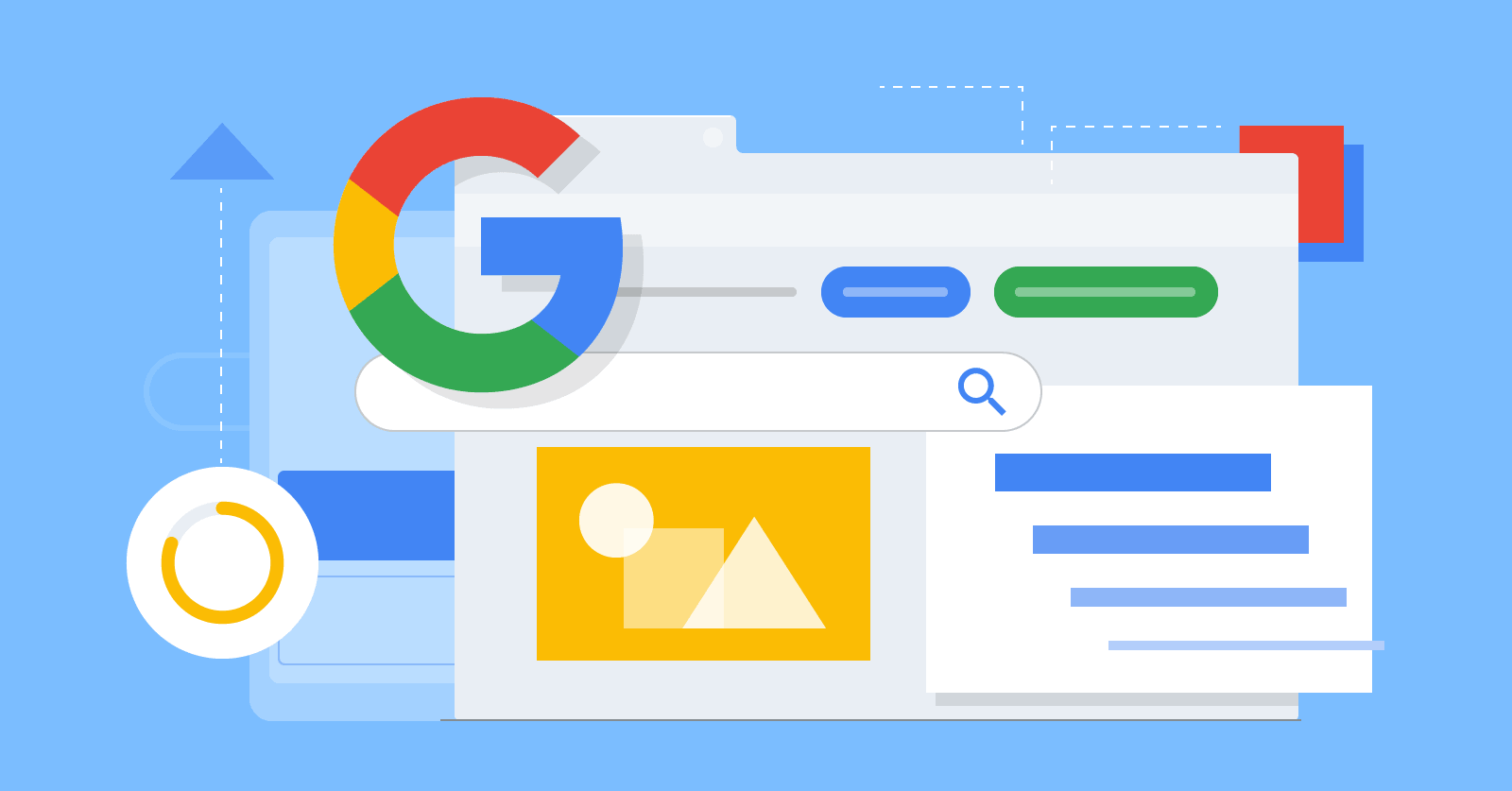
A successful SEO strategy can have a direct impact on your online performance and success. There are several tasks that need to be completed during the website planning process to ensure a solid strategy:
- Create a list of potential keywords for content creation
- Set up a blog for your website
- Generate high-quality content
- Analyze Google’s first SERPs
- Optimize on-page SEO
- Build links to your website
- Improve and update content
- Measure and keep track of your content’s success
With a detailed SEO plan containing the above aspects, you can build out and execute an efficient SEO strategy. This way, you can easily recognize your success as well as identify areas of opportunity or shortcomings for further plans.
Analytics and Measurement
Analytics and measurement are crucial components of website planning as they allow you to track your website’s performance and make data-driven decisions to improve it. By setting up analytics tools on your website, you can collect data on various aspects, such as website traffic, user behavior, and conversions.

Some popular analytics tools are Google Analytics, Adobe Analytics, and Mixpanel. These tools can help you track user activity on your website, such as the number of visits, the time spent on the site, and the pages visited. By analyzing this data, you can identify areas of your website that need improvement and adjust your website accordingly.
In addition to tracking website performance, measurement and analytics can also help you understand the success of your marketing campaigns. By tracking the effectiveness of your advertising efforts, you can identify which channels and campaigns are driving the most traffic and conversions. This information can then be used to refine your marketing strategies and allocate resources more effectively.
Web Application Development Challenges and Advises During Planning
UX & UI
A decade ago, mobile devices were not yet available or widely adopted like today, thus web design was more simple and only for desktop computers. Today’s web applications must be responsive and function on a variety of browsers and devices with varying screen sizes and hardware specifications. If consumers find your web application’s design complicated or confusing, it will be difficult to attract and maintain user loyalty.
Additionally, Web designers and developers frequently overlook the importance of website navigation, which is another crucial component. An intuitive design with easy navigation offers customers a pleasant experience by giving them the information they’re looking for without requiring them to learn anything.
Integration
Many apps are being created outside of a firewall, and this trend is expected to continue. Compared to the past, there is a greater variety of people. Businesses today have the option of using a cloud-based CRM system, internal BI tools, and a website maintained on-premises. Though it increases flexibility, there is still a hurdle to overcome. There must be a way to link everything! Now, the challenge isn’t to jam every feature into one app. An application that may need to integrate with other programs.
Security
There is a steady increase in the number of Internet threats, as well as their complexity and intensity. Statistically speaking, cyber-security incidents are on the rise.
Thus, It’s important to implement security measures so that consumers may conduct online transactions in a safe manner. These include DoS, Password attacks, SQL injection attacks, and others. Businesses need to be aware of this and take the necessary measures to protect and defend against any possible assaults.
Scalability
When developing your application, keep the future in mind. As well as learning as much as possible about what your application will need to do in the future in terms of functionality
As a result, corporations must prepare for growth and take into account scalability requirements when developing web applications. Despite an increase in the number of users, the website must continue to work properly.
Final thoughts
Spending your time on website planning in advance is a great investment to success in business. Now that you are equipped with all the necessary knowledge about website planning, it’s time to get started to build a real one.
Magenest is proud to be a website development and design company with 6+ years in business. We have helped brands transform their digital presence through our full-stack technology pack with Odoo, Shopify, Adobe Magento Commerce, and Amazon Web Services with a one-stop digital solution. We will provide you with a great website planning tool to ensure you don’t miss any crucial steps in launching your website, therefore your business will be able to more easily achieve its business objectives in the long run. If you have any issues, feel free to contact us, your message is just right away from us with one click.












